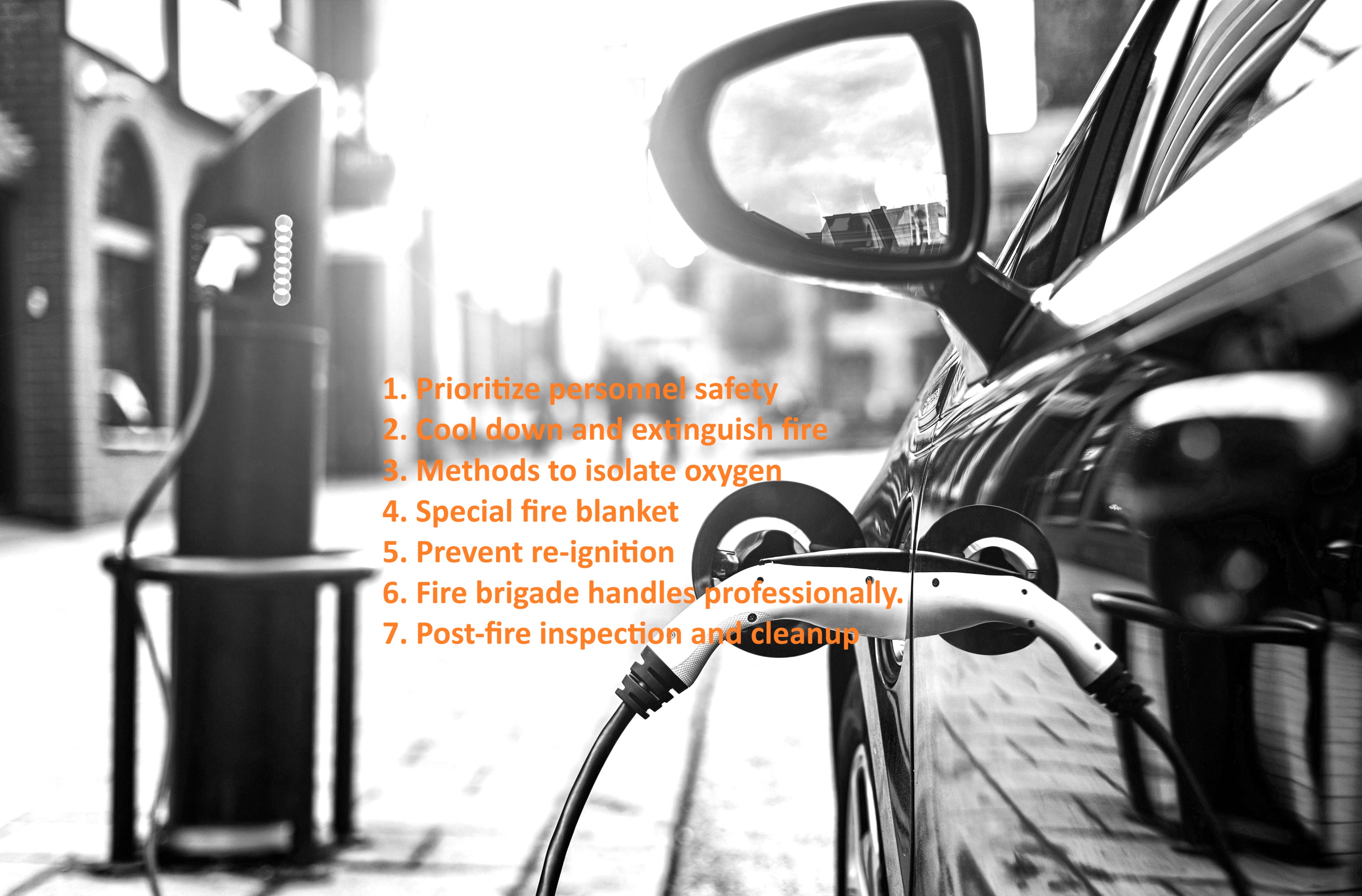
When electric vehicles (EVs) spontaneously ignite, the fire extinguishing methods are different from traditional gasoline vehicles because the lithium batteries used in EVs create special fire risks. Lithium battery fires may cause thermal runaway, resulting in uncontrollable high temperatures, rapid combustion and even explosions. Therefore, fire extinguishing treatments must be based on the characteristics of lithium batteries. The following are commonly used fire extinguishing methods when electric vehicles spontaneously ignite:
1. Prioritize personnel safety
- Evacuate immediately: First, ensure that people evacuate the burning vehicle and the surrounding area quickly, and keep a safe distance, because lithium battery fires may explode or produce toxic gases.
- Contact the fire department: Electric vehicle fires should be handled by professional fire brigade. Call the emergency number immediately to indicate that the electric vehicle ignited spontaneously, so that the fire brigade can arrive with professional equipment.
2. Cool down and extinguish fire
- Use large amounts of water to extinguish fires: Water is currently the main means of extinguishing fires. Large amounts of water (surrounding designed water mist) should be used to continuously cool the battery and prevent further spread of thermal runaway. Since lithium battery fires will continue to generate high temperatures, using only a small amount of water is not enough. Large amounts of water need to be poured over a long period of time. The fire brigade may use high-pressure water cannons or water spray systems to flood the vehicle with large amounts of water to ensure that the battery temperature drops quickly.
- Immersion method: Sometimes, especially when dealing with lithium batteries that continue to burn, the entire vehicle or battery module can be submerged in water to completely cool the battery and prevent another fire.
3. Methods to isolate oxygen
- Use dry powder fire extinguisher: If the initial stage of battery fire can be controlled in time, dry powder fire extinguisher can be used for preliminary fire extinguishing, especially to extinguish the flames spreading to other parts of the vehicle. However, for the lithium battery itself, dry powder can only suppress the fire but cannot completely Prevent thermal runaway.
- Carbon dioxide fire extinguisher: Carbon dioxide fire extinguisher can effectively suppress open flames in the early stages of fire, but its cooling effect is limited, and it is difficult to penetrate the flame inside the lithium battery, so it is only a short-term control method.
4. Special fire blanket
- Some professional fire brigades are equipped with fire-extinguishing blankets that can cover the entire vehicle to help isolate the air supply, thereby inhibiting the spread and expansion of the flame. Although this does not completely solve the burning of lithium batteries, it can reduce the harm of the fire to the surrounding environment.
5. Prevent re-ignition
- A characteristic of lithium battery fires is that even if the fire seems to be extinguished, internal combustion may continue and cause re-ignition. This is because the electrolyte and materials in lithium batteries are easy to re-burn at high temperatures. Therefore, even if the initial fire extinguishing is successful, the fire should be maintained Continuous monitoring of electric vehicles and regular cooling to prevent re-ignition.
- The fire brigade may professionally isolate or soak the battery module to ensure that no secondary fire occurs.
6. Fire brigade handles professionally. Professional fire brigade is usually equipped with special tools and techniques to handle lithium battery fires, including:
- Use high-temperature-resistant and explosion-proof equipment to approach fire sources.
- Set up a safety zone to prevent the fire from spreading to other areas.
- In some cases, the fire brigade will wait for the battery to burn out naturally to prevent re-ignition.
7. Post-fire inspection and cleanup
- After an electric vehicle fire, the remaining batteries should be inspected and handled by professionals. Batteries that catch fire may still have residual energy and can easily cause secondary fires, so they need to be disassembled and handled with caution.
- Vehicle wreckage should be sent to a professional waste disposal facility to ensure that hazardous materials do not pollute the environment.
Fire extinguishing when electric vehicles spontaneously ignite should be based on cooling and preventing re-ignition as the main strategies, combined with professional fire-fighting techniques. Large amounts of water are the most effective means of extinguishing fires, but they also need to be combined with other fire extinguishing tools such as dry powder fire extinguishers, carbon dioxide fire extinguishers and professional fire extinguishing blankets to control the fire and prevent its spread. The most important thing is that after the fire occurs, it should be handled by professional fire brigade and continuously monitored to avoid recurrence.
If you have any inquiries about response and management measures for occupational safety and health-related hazard prevention, please feel free to contact us.
